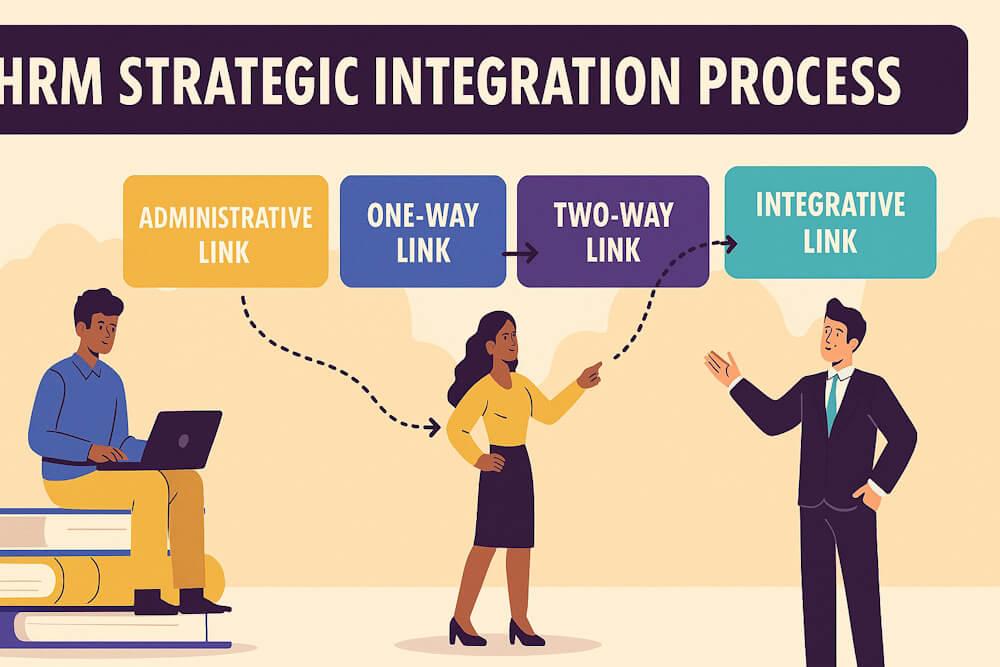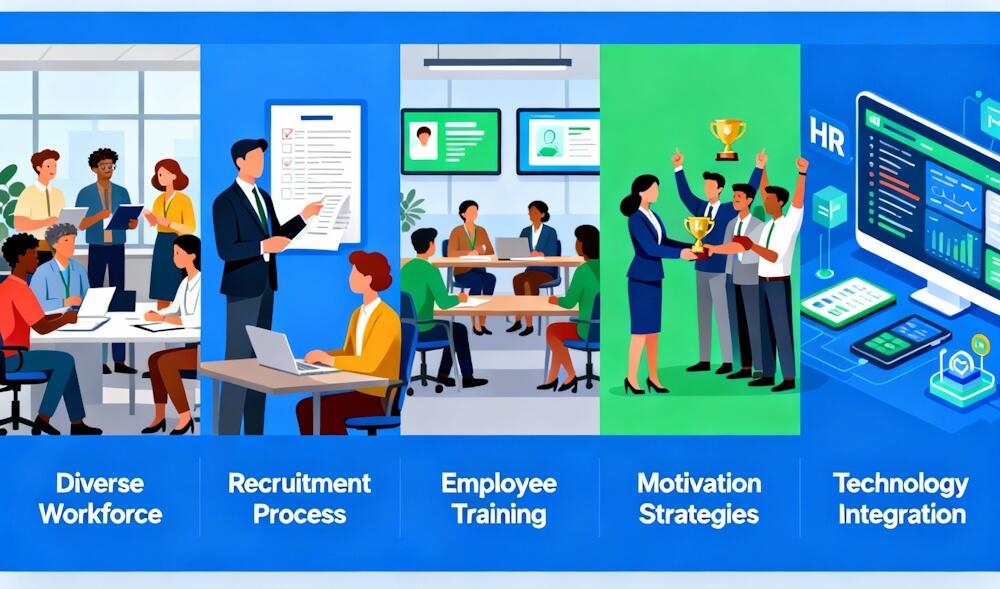Today’s dynamic and fast-changing environment has given rise to flatter organizational structures. Some organizations like to display flat and inverted pyramids, with the customer at the top level and the first line staff at the second level and so on.
In reality, however, and for long-term survival, the organisational structure should be like a flexible ring, with the customer and the marketplace at the centre. The ring has to be organic with the fluid organisation changing its complexion to suit the demands of the marketplace. These are the days of neo-conglomerates, where multiple organisations get together to manage specific demands of the market.
At the same time, two organisations might be competing for one product line in a market and working as partners for a second product line, acting as distributors for each other for a third and a fourth might be indifferent to each other. In this ever-changing, dynamic corporate world, new definitions of hierarchy, chains of command and reporting relationships continuously emerge.
Values and beliefs evolved by the enterprise would have their focus on people and the market to sustain over a long period. If values and beliefs do not focus on these key factors (customers and employees) the probability of the enterprise surviving for the long term will be dismal. This is indeed a challenging era for the human resource planner who has to plan for a dynamic flexible workforce that cannot be precisely defined.
Here’s an in-depth look into some recent trends in human resource planning:
Globalization and its Implications
Businesses today don’t have national boundaries—they reach around the world. The rise of multinational corporations places new requirements on human resource managers. The growth of liberal cross-border trade, the use of communications technology and the expansion of transnational companies are not likely to let up.
Attracting global talent requires staying abreast of new strategies for finding and attracting talent. The HR department needs to ensure that the appropriate mix of employees in terms of knowledge, skills and cultural adaptability is available to handle global assignments. In order to meet this goal, organizations must train individuals to meet the challenges of globalization.
HR planners would be required to train management to be more flexible in its practices.
Workforce Diversity
Workforce diversity assesses the similarities and differences among employees in terms of age, cultural background, physical abilities and disabilities, race, religion, gender, and sexual orientation. Diversity is critically linked to an organization’s strategic direction. A family-friendly organization, for example, should have flexible work schedules and provide employee benefits such as child care.
The workforce composition is also changing over the years. Demands for equal pay for equal work, putting an end to gender inequality and bias in certain occupations and the breaking down of glass ceilings have already been met.
HR planners must train people of different age groups to effectively manage work together, to deal with each other and to respect the diversity of views that each offer. In situations like these, a participative approach seems to work better. In the current scenario, employing a diversified workforce is a necessity for every organization but to manage such a diversified workforce is also a big challenge for management.
Employee Expectations
Nowadays workers are better educated, more demanding and are ready to voice strong, violent and joint protests in case their expectations are not met. The list of financial and non-financial demands is ever-growing and expanding. In fast-changing industries such as software, telecom, entertainment and pharmaceuticals the turnover ratio can rise fast if HR planners do not respond positively to employee expectations.
The acquisition and development costs of recruits can, as a result, mount up steadily. An efficient organisation today is therefore required to anticipate and manage turnover through human resource planning, training schemes followed by appropriate compensation packages.
Changing Skill Requirements
Recruiting and developing skilled labour is important for any company concerned about competitiveness, productivity, quality and managing a diverse workforce effectively. Skill deficiencies translate into significant losses for the organization in terms of poor-quality work and lower productivity, increase in employee accidents and customer complaints.
Since a growing number of jobs will require more education and higher levels of language than current ones, HR planners will have to communicate this to educators and community leaders etc. Strategic human resource planning will have to carefully weigh the skill deficiencies and shortages. HR planners of today will have to devise suitable training and short term programs to bridge the skill gaps and deficiencies.
Corporate Downsizing
Whenever an organization attempts to downsize, it is attempting to create greater efficiency. The pressure to remain cost-effective has also compelled many firms to go lean, cutting down extra fat at each managerial level. The premise of downsizing is to reduce the number of workers employed by the organization. HR planners must ensure that proper communication takes place during this time. They must minimize the negative effects of rumours and ensure that individuals are kept informed with factual data.
Continuous Improvement Programs
Organizations today are increasingly focused on quality. This builds a better foundation for them to serve their customers. This often involves a company-wide initiative to improve quality and productivity. The company changes its operations to focus on the customer and to involve workers in matters affecting them.
Companies strive to improve everything that they do, from hiring quality people, to administrative paper processing, to meeting customer needs. HR planners play an important role in the implementation of continuous improvement programs such as these. HR planners are tasked with the crucial task of preparing individuals for the change. This requires clear and extensive communications of why the change will occur, what is to be expected and what effect it will have on employees.
Re-engineering Work Processes for Improved Productivity
Although continuous improvement initiatives are positive starts in many organizations, they typically focus on ongoing incremental change. Such action is intuitively appealing—the constant and permanent search to make things better.
Yet, many companies function in an environment that is dynamic—facing rapid and constant change. Re-engineering occurs when more than 70% of the work processes in an organization are evaluated and altered. It requires organizational members to rethink what work should be done, how it is to be done and how to best implement these decisions. Re-engineering changes how organizations do their business and directly affects the employees.
Re-engineering may leave certain employees frustrated and angry and unsure of what to expect. Accordingly, HR planners must have mechanisms in place for employees to get the appropriate direction of what to do and what to expect as well as assistance in dealing with the conflict that may permeate the organization. For re-engineering to generate its benefits HR planners also need to offer skill training to employees.
Contingent Workforce
A very substantial part of the modern-day workforce are contingent workers. Contingent workers are individuals who are typically hired for shorter periods. No organization can make the transition to a contingent workforce without sufficient planning. As such, when these strategic decisions are being made, HR planners must be active partners in these discussions.
It is, after all, the HR planner’s responsibility to locate and bring into the organization these temporary workers. As temporary workers are brought in, HR planners will also have the responsibility of quickly adapting them to the organization. They will also have to give some thought to how they will attract quality temporaries.
Mass Customization
A lot is going on already within HR concerning mass customization, the optimal combination of mass production with customization. HR will need to take the tools of marketing around customization for consumers and clients and apply them to the task of talent segmentation. HR should develop principles for understanding the optimal level of customization in the employment relationship.
Moreover, because customization will often mean that different groups of employees receive different employment arrangements based on their needs or the way they contribute, HR must develop principles that equip leaders to explain these differences to employees.
Decentralized Work Sites
Worksites are getting more and more decentralized. Telecommuting capabilities that exist today have made it possible for employees to be located anywhere on the globe. For HR planners, decentralized work sites present a challenge. Much of that challenge revolves around training managers in establishing and ensuring appropriate work quality and on-time completion. Work-from-home may also require HR planners to rethink their compensation policy. Will it pay by the hour, on a salary basis, or by the job performed?
Also, because employees in decentralized work sites are full-time employees of the organization as opposed to contingent workers, it will be the organization’s responsibility to ensure the health and safety of the decentralized workforce and also meet its infrastructural needs.
Employee Involvement
For today’s organizations to be successful, several employee involvement concepts appear to be accepted. These are delegation, participative management, work teams, goal setting, employee training and empowering of employees. HR planners have a significant role to play in employee involvement. What is needed is demonstrated leadership as well as supportive management. Employees need to be trained and that’s where human resource management has a significant role to play.
Technology
With the current technological advancement and its projection in the future, it has given new eyes to HR planners. Several computerized systems have been invented to help in HRP. For instance, paperwork is being replaced by the Human Resources Management Information System (HRMIS) which can be tailor-made or off-the-shelf.
These systems help in handling a lot of data on a chip other than having a room full of file shelves. What HRP is concerned with here is the safety (confidentiality) of the data/information of staff, and therefore it is at the forefront of having to train personnel in operating such systems and developing the integrity of such personnel to handle the sensitivity of the matter.
Health and Safety
The area of safety and accident prevention is of great concern to managers today, at least partly because of greater legal scrutiny on the number of deaths and accidents at work. Failure to provide a safe place to work can result in major fines and even criminal convictions for managers.
Supervisors play a key role in monitoring workers for safety. With the emergence of the wellness clubs and fitness centres together with the need for having a healthy workforce, it has emerged that HRP has to move to another step like subscribing its employees to fitness clubs or paying health or life insurance premiums for the staff. This is not only a productivity strategy but also a strategy used to attract and retain valuable employees. In many organizations, such a shift to providing health services to staff through health insurance, sensitization, and free medical treatment bills has resulted not only in better performance but also in the attraction and retention of highly qualified personnel.
Work-Life Balance
For a long time now, there has been a big debate in HRP about work-life balance. The fact is that a happy family is equal to a happy workforce. In keeping with current trends, HR planners today have to work on ensuring that every employee’s family is, to some extent, a happy one. To this effect, investing in activities that may seem out of hand for the organization is inevitable. HR planners today have to, thus, convince management to organize days out for staff and their families or give days off to employees to attend to their family issues.







